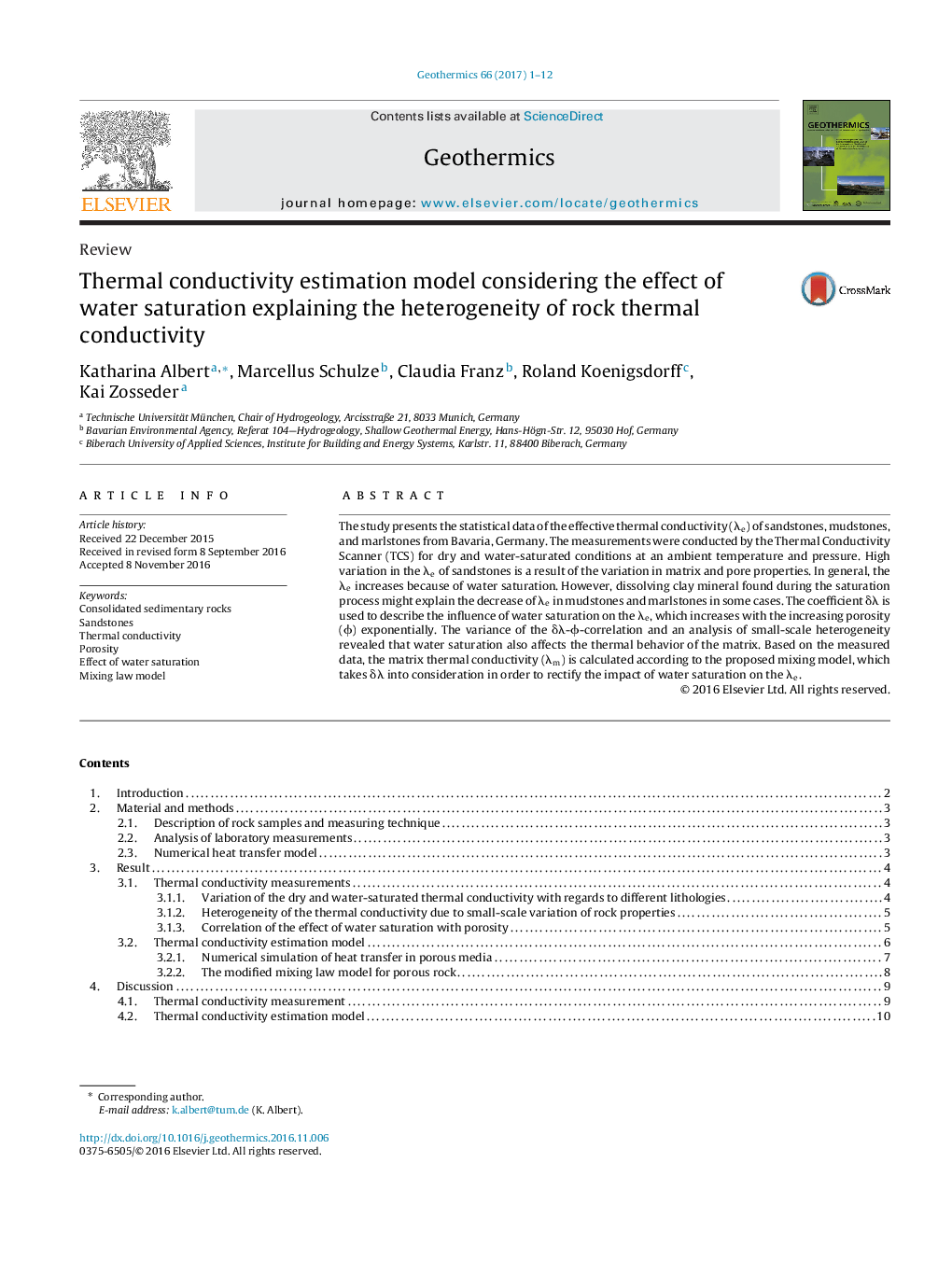| Article ID | Journal | Published Year | Pages | File Type |
|---|---|---|---|---|
| 5478712 | Geothermics | 2017 | 12 Pages |
Abstract
The study presents the statistical data of the effective thermal conductivity (λe) of sandstones, mudstones, and marlstones from Bavaria, Germany. The measurements were conducted by the Thermal Conductivity Scanner (TCS) for dry and water-saturated conditions at an ambient temperature and pressure. High variation in the λe of sandstones is a result of the variation in matrix and pore properties. In general, the λe increases because of water saturation. However, dissolving clay mineral found during the saturation process might explain the decrease of λe in mudstones and marlstones in some cases. The coefficient δλ is used to describe the influence of water saturation on the λe, which increases with the increasing porosity (Ï) exponentially. The variance of the δλ-Ï-correlation and an analysis of small-scale heterogeneity revealed that water saturation also affects the thermal behavior of the matrix. Based on the measured data, the matrix thermal conductivity (λm) is calculated according to the proposed mixing model, which takes δλ into consideration in order to rectify the impact of water saturation on the λe.
Related Topics
Physical Sciences and Engineering
Earth and Planetary Sciences
Geochemistry and Petrology
Authors
Katharina Albert, Marcellus Schulze, Claudia Franz, Roland Koenigsdorff, Kai Zosseder,
